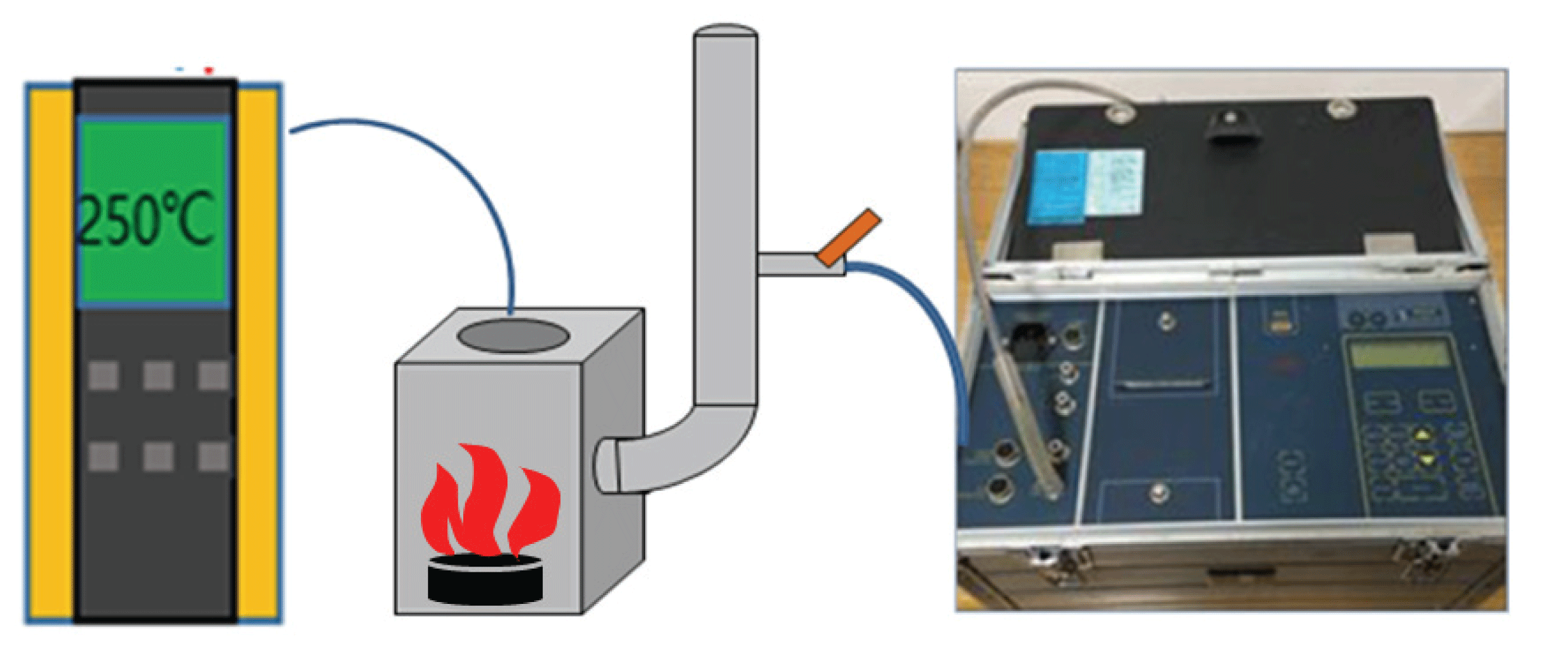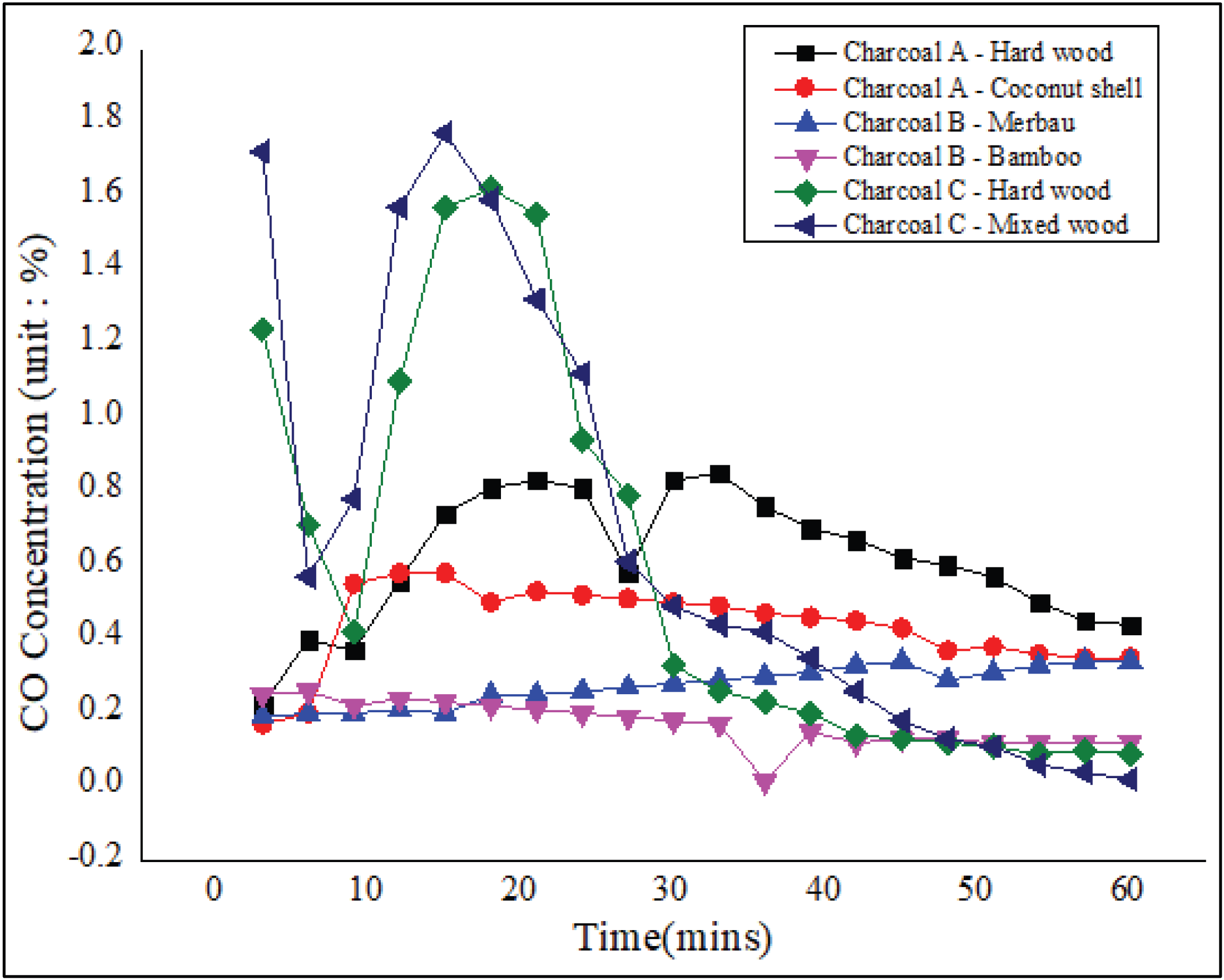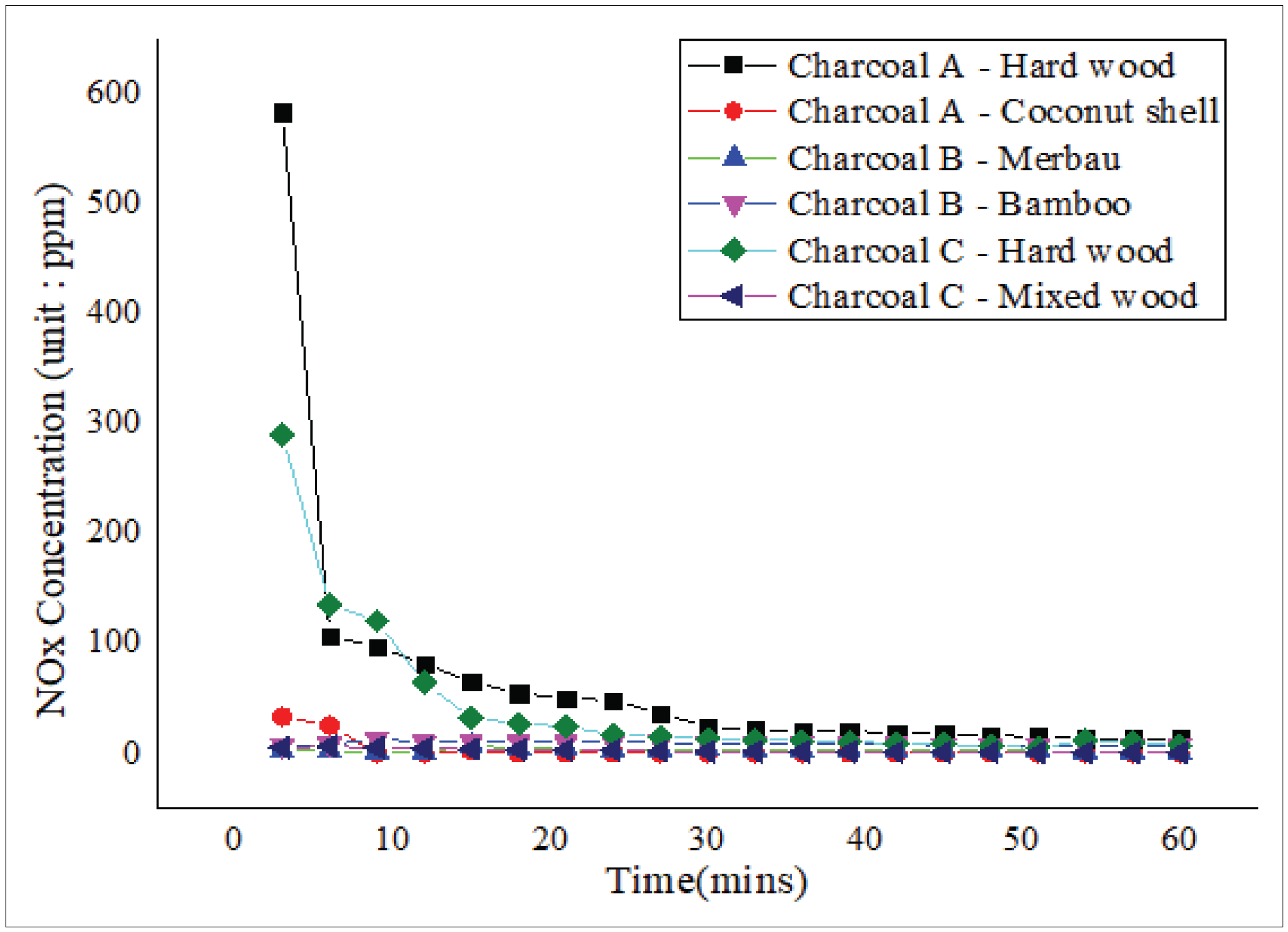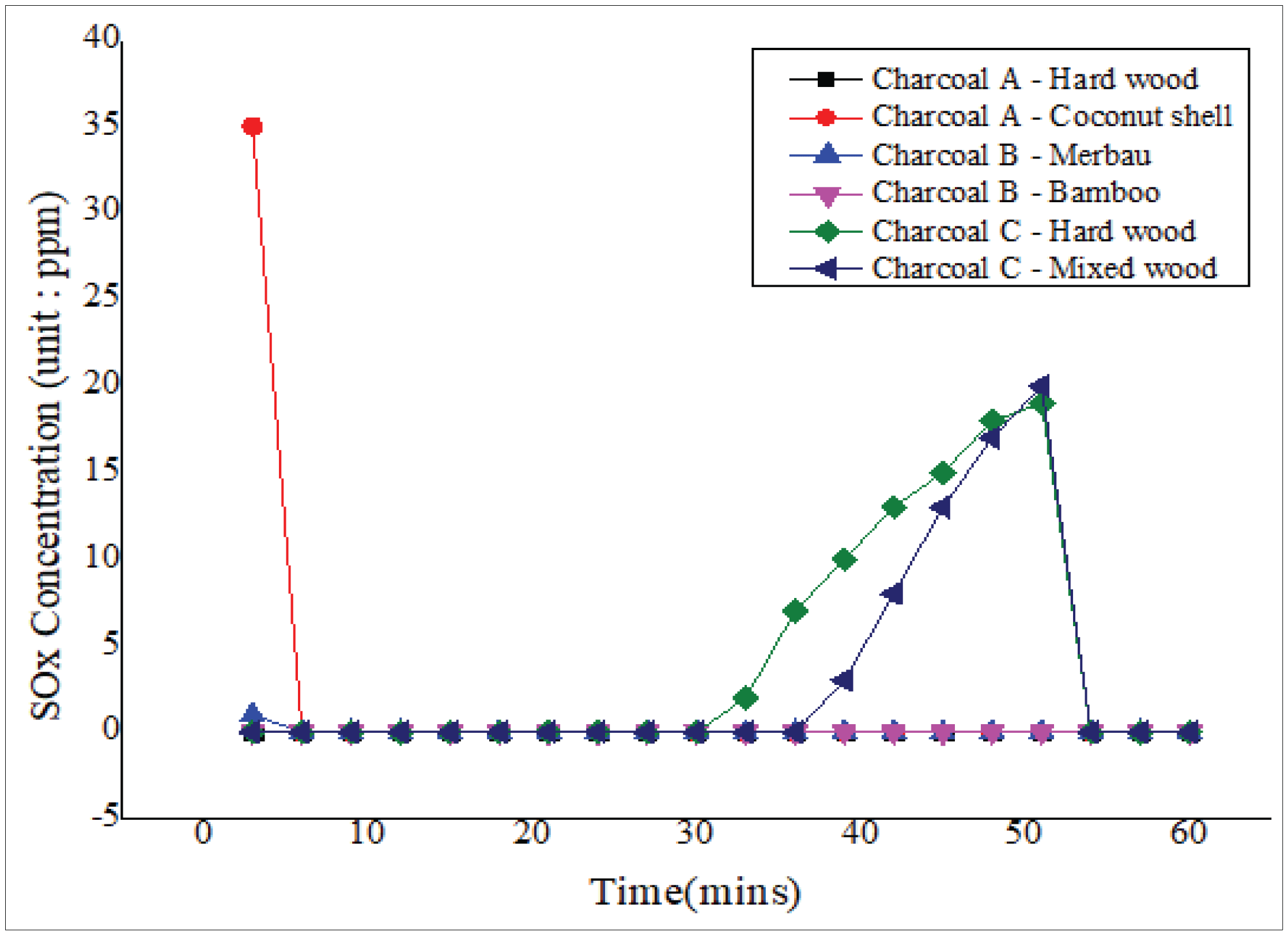1. INTRODUCTION
Recently, there has been increasing public interest in fine dust and pollutants entering in the atmosphere of Korea (Jo et al., 2019). The Ministry of Environment amended and promulgated the Enforcement Regulations of the Clean Air Conservation Act in May 2019, and planned to implement it in January 2020. According to the amended enforcement regulations, substances such as ethylbenzene, styrene, and carbon tetrachloride have been newly established as specific air pollutants, and the regulations on existing specific air pollutants (13 types including chromium, arsenic, mercury, etc.) have been strengthened by approximately 33%. For 11 types of general air pollutants (dust, carbon monoxide, nitrogen oxides, sulfur oxides, etc.), the standards on allowable emission have been reduced by an average of 30% (Magnone et al., 2019).
As the standards on allowable emission of pollutants have been strengthened, companies have established air pollutant emission reduction devices, and coal power plants came up with alternatives such as an indoor coal yard (an indoor coal yard project to reduce scatter dust from outdoor coal yards) and the use of renewable energy sources such as wood pellets, etc (Kang et al., 2018; Yang et al, 2018). Recently, research on the use of resources such as mixed solid fuels including waste wood and spent carbon has been conducted to study fuel-type wood products, which include agglomerated wood charcoal, as it is in increasing demand in Korea due to an increasing number of campers (Kwon et al., 2010; Lee et al., 2015). However, frequently there has been cases in which harmful gases such as benzene, toluene, and carbon monoxide generated when waste wood prohibited in such fuel-type wood products is used (Kwon et al., 2018; Yang et al., 2018; Edoard et al., 2019).
In order to prevent this, in accordance with Article 14, Paragraph 1 of the Enforcement Decree of the “Law on Sustainable Use of Wood”, the Korea Forest Service has been implementing administrative and judicial procedures for quality compliance by inspecting 15 types of wood products through continuous crackdown and product testing. In particular, the quality of fuel-type wood products such as wood pellets and agglomerated wood charcoal are evaluated according to the heavy metal content and calorific value included in the product, which are items in the current quality standards (Lee et al., 2017). However, the revised regulations not only strengthened the standards for restricting air pollutant emissions, but also included biomass burning (meat and fish roast, open-air incineration, wood stove, charcoal kiln, etc.), which is a comprehensive term that refers to biomass burning among air pollutant emission sources specified in 2011.
During biomass burning, not only various particulate and gaseous air pollutants are emitted, but also greenhouse gases such as carbon dioxide, methane, and nitrous oxide are discharged on a large scale (Kim, 2011). There is an increased interest from the public in the air pollutants emitted during charcoal combustion, which occurs frequently in restaurants and camping sites, and there are studies on the emission of fine dust due to roasting (Park et al., 2011).
However, there have been few studies on air pollutants generated during combustion of fuel-type wood products such as agglomerated wood charcoal and wood pellets. In particular, research on fuels based on wood is at best about reducing air pollutant generation during incineration of waste wood and calculating annual average greenhouse gas emissions by tree species and products for charcoal (Kim et al., 2010; Seo et al., 2015; Yang et al., 2017).
At a time when the importance of strengthening air pollution emission standards and biomass burning is emphasized, this study aims to compare and analyze the quality characteristics among the agglomerated wood charcoal products distributed in Korea and the emissions of air pollutants (CO, NOx, SOx) generated during combustion, in an attempt to prepare emission standards for air pollutants from agglomerated wood charcoal.
2. MATERIALS and METHODS
The test materials used in this study are three types of agglomerated charcoal distributed in Korea in accordance with the specifications and quality standards of wood products (No. 2018-8). They were classified into 4 types of lumber industry (domestic production) and wood import distribution business (import) for tree species. Specified types of Agglomerated wood charcoal specimens are shown in the Table 1. Charcoal A (Mixed Hard wood) is obtained from Homebeque Inc., Charcoal A (Coconut shell) from Juwon System, Charcoal B (Merbau) from Shinil Energy, Charcoal B (Bamboo) from Wooae Hardwood Charcoal Korea Inc., Charcoal C (Mixed Hard wood) from Yongmoon Industry, and Charcoal C (Mixed wood) from Daemyung Charcoal Inc.
| Type of agglomerated wood charcoal | |||
|---|---|---|---|
| Charcoal A | Charcoal B | Charcoal C | |
| specie of raw materials | Mixed Hard wood | Merbau | Mixed Hard wood |
| Coconut shell | Bamboo | Mixed wood | |
Charcoal A - agglomerated wood charcoal powder,Charcoal B - agglomerated wood charcoal sawdust,Charcoal C - agglomerated wood charcoal for ignitingnine-holed charcoal
The calorific value, fixed carbon, and volatile matter were analyzed to compare the fuel specificity of the test materials, and Bomb calorimeter (Parr 6400, PARR INSTRUMENT INC, USA) was used to measure the high heat generation by using dry raw materials. The components of moisture, volatile matter, ash, and fixed carbon were analyzed in accordance with KS F 3705 (industrial analysis method of coals and cokes). An automatic elemental analyzer (Flash 2000, Thermo SCIENTIFIC, USA) was used to analyze the carbon and hydrogen composition of the test piece.
To predict air pollutants emitted to the atmosphere during agglomerated wood charcoal combustion, 8 kinds of heavy metals, which are harmful substances in products contained in the test piece, and small amounts of harmful substances, such as barium nitrate, were analyzed using inductively coupled plasma spectrometers (JP/ICPE-9820, Shimadzu, Japan). As a pre-treatment method, the sample is screened with 0.25 g of particles less than 40 mesh (0.25 mm), diluted with distilled water of 70% nitric acid solution by 240 times the sample weight, and pre-treated with temperature rising for 30 minutes and maintaining the temperature at 170°C for 30 minutes using a microwave decomposition system (Microwave, Multiwave PRO, Anton Parr, Austria). Since the experiment was carried out with a small amount of sample (0.25 g), all the samples were dissolved without leaving residuals.
In order to compare the air pollutants generated during the combustion of agglomerated wood charcoal products, a commercially available 40 × 40 × 80cm briquette furnace, as shown in Fig. 1, was selected and used to burn the actual materials. A test piece of 330 g was installed inside the furnace. Then, from the time of ignition (igniting temperature of 250°C), air pollutants (ppm, %) discharged during the ignition measurement time of 60 minutes were measured in accordance with the specifications and quality standards of wood products (No. 2018-8). At this time, the air pollutants were measured in terms of CO, NOx, and SOx, using a portable combustion flue gas analyzer (GreenLine MK2, EUROTRON s.r.l, Italy).
3. RESULTS and CONSIDERATIONS
Two types of agglomerated wood charcoal distributed in Korea were selected to measure the quality characteristics of the product and the amount of air pollutants emitted during combustion. Quality inspection was carried out according to the standard quality standards of wood products in Table 3. The air pollutant emission criteria shown in Table 4 were compared with the amount of air pollutants generated during the combustion of agglomerated wood charcoal, and the result was deducted.
The results of calorific value, fixed carbon, volatile matter, and elemental analysis achieved by a test method according to supplement 14 among the specifications and quality standards of wood products (No. 2018-8) are shown in the Table 2. Among the agglomerated wood charcoal products, Charcoal A (Mixed Hard wood), Charcoal B (Mixed Hard wood), and Charcoal C (Mixed wood) have an ash content of more than 30% and a fixed carbon content of less than 42%. It is assumed that the ash content is high because it was molded using raw materials under the conditions in which substances, such as soil, introduced in the production process were not removed. In addition, Charcoal B of two species, which have the lowest moisture content and ash content of less than 10% and the highest heat generation quality of greater than 7,600 kcal/kg, has excellent fuel specificity, since its raw materials are tropical tree species of Merbau and Bamboo (Jang et al., 2017). Through experiments, the high heat generation amount and the fixed carbon content of the agglomerated wood charcoal appeared to have a proportional relationship. This is probably because the higher the carbonization degree during the carbonization process, the less the volatile matter, and the more fixed carbon content and ash content of residual minerals, which have an inversely proportional relationship (Lee et al., 2015). Also, the higher fixed carbon content is indicated with the higher calorific value. This is because the total weight of the sample can be calculated as the sum of volatilization (volatile matter) and char reaction (fixed carbon deformation), moisture evaporation (moisture content), and ash (residual ash) (Lee et al., 2000). Because hydrogen and oxygen contents are reduced, it is closely related to the carbonization of raw materials (Jo et. Al., 2006). In the case of Charcoal A (Coconut shell), the carbon (%) content of elemental analysis is lower than the fixed carbon (%) content. That is probably because in the elemental analysis process, the sample in the dry state was analyzed, whereas in the process of industrial analysis, the sample was analyzed in the non-dry state, resulting in the carbon element reversal phenomenon of the fixed carbon due to the difference in moisture content of 20.8%.
The results of the content of heavy metals, barium nitrate, etc., that are contained in the test piece are shown in the Table 3. In contrast to Table 4, the Cu content in Charcoal A and Charcoal C and Pb content in Charcoal A (Coconut shell) exceeded the reference values. This seems clear from the detection of trace amounts of heavy metals above the standard values that may occur during the process of producing agglomerated wood charcoal and material pre-treatment. For all other products, As, Cd, and Hg were not detected and Ni and Zn were below the standard values. The reason why Ba (%) was detected in two species of Charcoal A is that barium nitrate within 30% of the weight of the charcoal sample is added to promote initial combustion due to the characteristics of agglomerated wood charcoal powder (charcoal A).
The results of the comparison of carbon monoxide and carbon dioxide emissons according to the type of agglomerated wood charcoal are shown in Fig. 2. The average hourly rate of CO generation is 0.0615% (615ppm) (Mixed Hard wood), and 0.0433% (433ppm) (Coconut shell) for Charcoal A, 0.0279% (279ppm) (Merbau) and 0.017% (170ppm) (Bamboo) for Charcoal B and 0.0586% (586 ppm) (Mixed Hard wood) and 0.0589% (589 ppm) (Mixed wood) for Charcoal C. As shown in Table 5, two species of Charcoal A are complexing agents that form an explosive mixture when mixed with organic substances, and barium nitrate is agitated, resulting in lower CO emissions due to higher complete combustion than Charcoal C. Since the moisture content of Charcoal A (Coconut shell) is 20.8%, which is higher than that of Charcoal A (Mixed Hard wood), it can be confirmed that it takes more time to ignite by the increasing CO generation, which shows a difference in average CO generation with low volatile matter content of 7.5%. In the case of two species of Charcoal B, CO emissions were significantly less than Charcoal A and Charcoal C. This is because the fixed carbon in Charcoal B has a higher proportion of fixed carbon when compared to the carbon element, and a low volatile matter content, leading to little absolute amount of CO that can be generated due to oxidation of carbon during combustion. In addition, Charcoal C showed a rapidly high CO generation following the sharp rise and fall of the initial CO generation due to sawdust and sulfur as the complexing agent settled on the surface, and incomplete combustion during the process of spreading fire on the sample. The amount of CO generated was closely related to the content of fixed carbon relative to the preceding carbon element and volatile matter content, and the higher the carbon element excluding the fixed carbon and the higher the content of volatile matter, the higher the amount of CO generated.
The results of comparison the generation of nitrogen oxides and sulfur oxides according to the type of agglomerated wood charcoal are shown in Figs. 3, 4. As shown in the figure, the average hourly rate of NOx generation is 65.5 ppm (Mixed Hard wood) and 2 ppm (Coconut shell) for Charcoal A, 2.6 ppm (Merbau) and 8.7 ppm (Bamboo) for Charcoal B, and 41.3 ppm (Mixed Hard wood) and 41ppm (Mixed wood) for Charcoal C. Among them, in the case of Charcoal A (Mixed Hard wood), the high amount of NOx is generated due to incomplete combustion during initial combustion, resulting in an increase in average amount of generation.
In the case of SOx emissions, it was not detected in the agglomerated wood charcoal produced with mixed hardwood species, and 1.8 ppm was detected in the product made with coconut shell. No detection occurred in charcoal B for both species, and it was 4.2 ppm (Mixed Hard wood) and 3 ppm (Mixed wood) for Charcoal C. Although a trace amount was generated in Charcoal C, SOx emissions in the entire test piece are negligible. In addition, the phenomenon in which SOx emission recording occurs mainly after 30 minutes is due to the condensate that is generated due to the temperature deviation when moisture in the gas or high temperature heat in the combustion chamber is sucked into the gas sampling hose, when measuring in a place with the emission of high temperature heat, such as a chimney, due to the properties of the analysis equipment.
According to the statistics on air pollutant emissions released by the National Institute of Environmental Science and Technology, Table 6 shows the annual average amount of air pollutants generated from 2015 to 2016 and the annual average amount of biomass burning. As shown in the table, among the total air pollutant emissions, biomass burning emissions account for 30% of CO, 1% of NOx, and 0.02% of SOx and carbon monoxide emissions accounted for a significant portion among the emissions of various air pollutants.
Among these, the air pollutants emitted during the combustion of agglomerated wood charcoal were calculated in consideration of the production and import distribution of the agglomerated wood charcoal. As shown in Table 7, CO, NOx, and SOx were predicted to account for approximately 0.01%, 0.005%, and 0.01% of emissions due to biomass burning, respectively. The calculation of this is as follows. 4,368 tons of production distribution of agglomerated wood charcoal and 37,215 tons of imported distribution were combined (41,583 tons), and the cumulative amount of CO, NOx, and SOx generated per hour, which was obtained in this study, is multiplied by the minimum measured value of 170 ppm, 2 ppm, 1.8 ppm, and the maximum measured value of 615 ppm, 65.5 ppm, 4 ppm, respectively. In this process, the ranges of NOx and SOx were omitted because the differences between the minimum and maximum measurements were not large. As the interest from the public in air pollutants generated during biomass burning increases, attention should be paid to CO generated during the burning of agglomerated wood charcoal. In particular, future studies are needed on the reduction of CO generation in Charcoal A and Charcoal C, which were generated in large amounts.
| CO | NOx | SOx | |
|---|---|---|---|
| Average of yearly emissions based on Charcoal combustion (unit : ton) | 7-25 | 0.47 | 0.01 |
| The ratio of emission (charcoal/biological combustion) | under 0.01% | under 0.005% | under 0.01% |
4. CONCLUSION
This study selected three species of agglomerated wood charcoal distributed in Korea, agglomerated wood charcoal powder (Charcoal A), agglomerated wood charcoal sawdust (Charcoal B), and agglomerated wood charcoal for igniting nine-holed charcoal (Charcoal C), among fuel-type wood products. Fuel specificity, hazard material contents and air pollutant emissions generated during combustion based on the products were comparatively analyzed, and the following results were derived.
As for fuel specificity of the agglomerated wood charcoal, fixed carbon and ash are inversely proportional, whereas fixed carbon and highcalorific value are proportional. Since Charcoal B has a higher fixed carbon content than Charcoal A, the proportion of fixed carbon in the carbon element is large and the amount of CO generated is low due to the small amount of carbon volatilized.
Comparing with the emissions standards of the Air Quality Conservation Act (as of 2019-carbon monoxide: 200 ppm or less (biomass and wood pellet facilities), nitrogen oxides: 150 ppm (biomass and wood pellet facilities), compared with sulfur oxides: 100 ppm (drying and heating facilities among general solid fuel product manufacturing facilities)), the emissions in this study for the air pollutants generated during the burning of agglomerated wood charcoal did not meet the emission standards of nitrogen oxides and sulfur oxides in all products. However, the CO emissions of Charcoal A and Charcoal C exceeded the standard values.
Currently, there are no emission regulations for air pollutants generated during combustion of agglomerated wood charcoal, but the calculation of the emission coefficients for air pollutants generated by agglomerated wood charcoal kilns, roasters when using white charcoal, and wood stoves for wood pellets has been established. However, there are only few studies on emission control for agglomerated wood charcoal that is frequently used for roasting and as camping fuel. Based on the analysis of combustion gas generated during combustion derived from this study, future research is needed for comparing with the emission standards of pellets, which are wood products for fuel, among the existing biomass burning standards and for reducing carbon monoxide generated during incomplete combustion of agglomerated wood charcoal.




